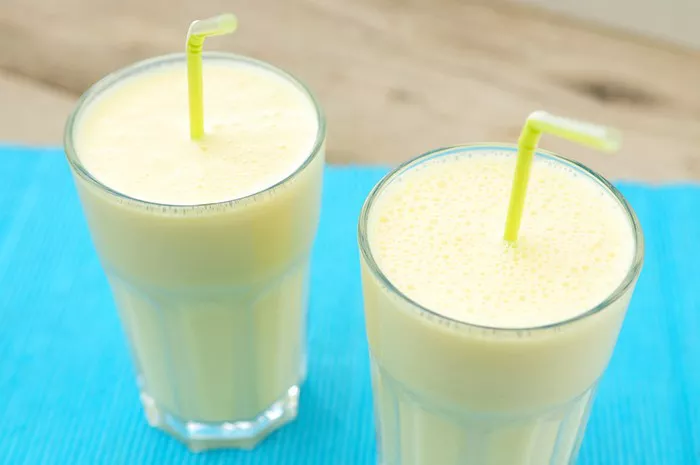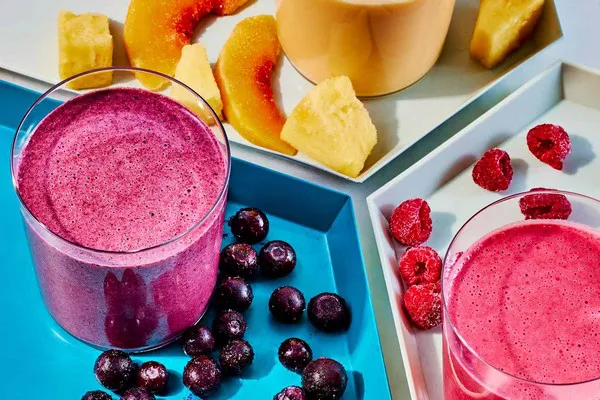Smoothies have become a popular and convenient way to enjoy a nutritious meal or snack. They are easy to make, customizable, and can be packed with vitamins, minerals, and other essential nutrients. However, one question that often arises is: how long should you blend a smoothie? As a food expert, I’ll provide detailed explanations and guidelines to help you achieve the perfect smoothie consistency.
Understanding Smoothie Consistency
Before diving into the specifics of blending time, it’s important to understand the desired consistency of a smoothie. Smoothies can range from thick and creamy to thin and pourable, depending on personal preference. Some people prefer a thicker smoothie that feels more filling, while others enjoy a thinner consistency that’s easier to drink.
Factors That Affect Blending Time
Several factors can impact how long you should blend your smoothie, including:
Ingredients
The types and quantities of ingredients you use will significantly affect blending time. For example, softer fruits like bananas and berries will blend more quickly than harder vegetables like carrots or kale. Additionally, the amount of liquid in your smoothie will determine its overall consistency and how long it takes to blend.
Blender Type
The type of blender you use will also play a role in blending time. High-power blenders, such as Vitamix or Blendtec models, can blend ingredients more quickly and efficiently than lower-power countertop or immersion blenders.
Desired Consistency
As mentioned earlier, personal preference for smoothie consistency will dictate how long you blend. If you prefer a thicker smoothie, you may need to blend for a longer period to achieve the desired texture. Conversely, if you like a thinner consistency, blending for a shorter time may be sufficient.
Blending Guidelines
Now that we’ve covered the factors that affect blending time, let’s dive into some specific guidelines to help you achieve the perfect smoothie consistency.
Start with Liquid
Always begin by adding your liquid ingredients first. This will help the blender run more smoothly and prevent the blades from getting stuck. Common liquid options include water, milk, juice, or a dairy-free alternative like almond milk or coconut water.
Add Softer Ingredients
Next, add your softer ingredients, such as bananas, berries, avocados, or soft vegetables like zucchini. These ingredients will blend quickly and help create a smooth base for your smoothie.
Incorporate Harder Ingredients
Once your softer ingredients are well-blended, add any harder ingredients, such as greens (spinach, kale), frozen fruits, or nuts and seeds. These ingredients may take longer to blend, so be patient and let the blender do its job.
Blend Until Smooth
Blend your ingredients on a medium to high speed until you achieve a smooth and uniform consistency. This may take anywhere from 30 seconds to a few minutes, depending on your blender’s power and the types of ingredients you’re using.
Adjust Consistency as Needed
If your smoothie is too thick, you can add more liquid until you reach your desired consistency. Conversely, if it’s too thin, you can add more solid ingredients like frozen fruit or a handful of spinach.
Troubleshooting Common Issues
While blending your smoothie, you may encounter some common issues that require troubleshooting. Here are some tips to help you resolve them:
Clumping or Uneven Blending
If your smoothie is clumping or has uneven patches of unblended ingredients, stop the blender and use a tamper or spoon to push the ingredients down towards the blades. This will help ensure everything gets evenly blended.
Over-Blending
Over-blending your smoothie can lead to a foamy or gummy texture. If this happens, stop blending immediately and pour your smoothie into a glass. You can also try adding a small amount of ice to help break up any foam and improve the texture.
Blender Overheating
If your blender starts to overheat or make strange noises, stop blending immediately and let it cool down for a few minutes. Overheating can damage the blender’s motor and shorten its lifespan.
Ingredient Proportions
If your smoothie is too thick or too thin, it may be due to incorrect ingredient proportions. Adjust the quantities of liquid and solid ingredients until you find the perfect balance for your taste and texture preferences.
Conclusion
In conclusion, the length of time you blend your smoothie will depend on several factors, including the types and quantities of ingredients you use, the type of blender you have, and your personal preference for consistency. By following the guidelines outlined in this article, you can achieve a smooth and delicious smoothie that meets your taste and texture preferences. Remember to start with liquid, add softer ingredients first, incorporate harder ingredients, blend until smooth, and adjust consistency as needed. With a little practice, you’ll be able to create perfect smoothies every time.
Related Topics:


























